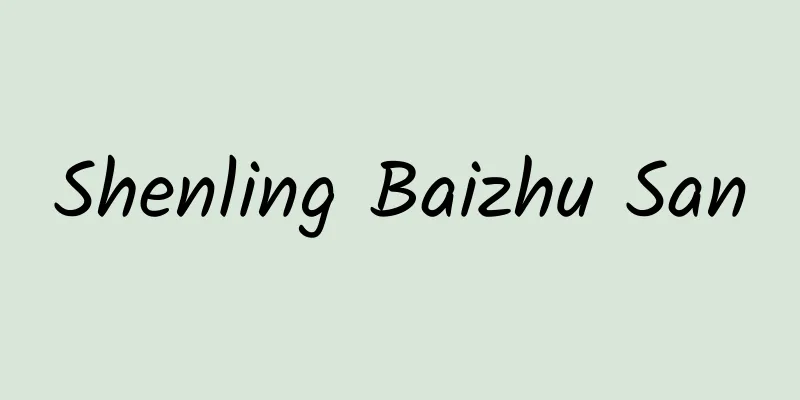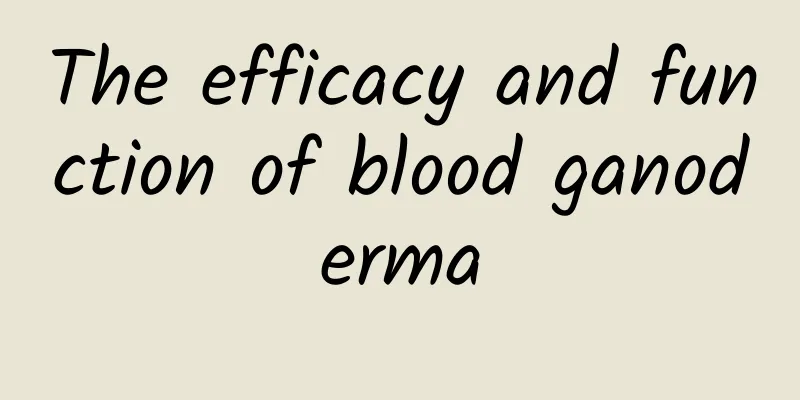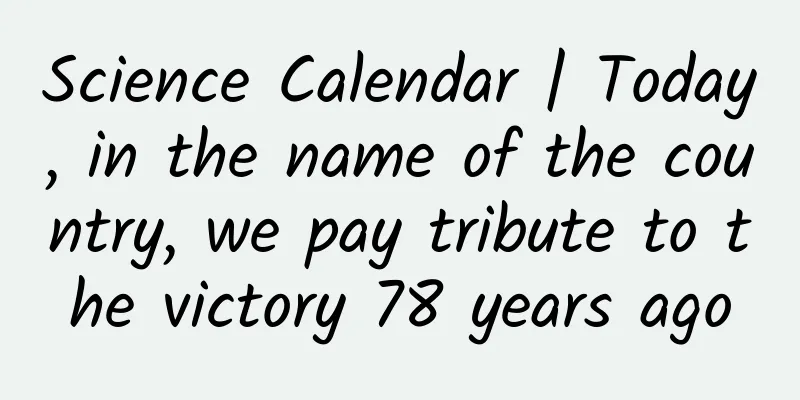Shenling Baizhu San

|
Shenling Baizhu Powder is made from a variety of precious Chinese herbal medicines such as ginseng, white atractylodes, and poria. This kind of Shenling Baizhu Powder has a very high health value. Shenling Baizhu Powder can improve gastrointestinal problems, enhance the body's immunity, and promote the body's metabolic capacity. It can be said that the health care effects of Shenling Baizhu Powder are very profound. Of course, as a common Chinese medicine, its efficacy is also quite high. Shenling Baizhu powder can be used to treat many diseases in clinical practice. For example, some common diarrhea, chronic colitis, and duodenal ulcers in daily life can actually be treated with Shenling Baizhu powder. So what other pharmacological effects does Shenling Baizhu powder have? Functional analysis The prescription uses ginseng, white atractylodes, poria, and licorice (i.e. Sijunzi Decoction) to nourish the spleen and stomach qi and is the main ingredient. With the sweet and mild taste of white lentil, coix seed, and yam, and the sweet and astringent taste of lotus seeds, Atractylodes macrocephala can not only strengthen the spleen, but also penetrate dampness and stop diarrhea, making it an auxiliary medicine. Amomum villosum has a fragrant effect of invigorating the spleen, promoting metabolism in the central region, unblocking the upper and lower qi mechanisms, and stopping vomiting and diarrhea, so it is an adjuvant. Platycodon grandiflorum is the guiding drug of the Taiyin Lung Meridian. When it is included in the prescription, it acts like a boat or a vehicle carrying the medicine upward to the upper burner to benefit the lung qi. This prescription is also suitable for those with weak lung qi and long-term cough with excessive sputum. It is a method of nourishing the earth and producing metal. The combination of these medicines can replenish qi and strengthen the spleen, eliminate dampness and stop diarrhea. Pharmacological Action Its main functions include regulating gastrointestinal motility, improving metabolism and enhancing immunity. 1. Regulate gastrointestinal motility: A small dose of this decoction has an excitatory effect on the intestine and can relieve some of the inhibition of adrenaline on the intestine; a large dose inhibits the contraction of the intestine and can antagonize the contraction of the intestine caused by barium chloride and pilocarpine, and can enhance the intestinal absorption of water and chloride ions. 2. Improve metabolism: This prescription is used to treat intestinal diseases caused by spleen deficiency (chronic gastritis, chronic colitis, gastric or duodenal ulcer). Before treatment, the patient's urine creatinine, uric acid, and urea nitrogen are significantly lower than normal values, but they increase significantly after treatment. It can also enhance the patient's immune function and improve blood rheology indicators. Indications It is mainly used to treat spleen deficiency and endogenous dampness, with symptoms including abdominal distension, loss of appetite, loose stools, weakness in the limbs, emaciation, sallow complexion, greasy white tongue coating, and a weak and slow pulse. It can also treat spleen malnutrition in children, with sallow complexion, haggard appearance, withered hair, listlessness, loss of appetite, restless sleep, or edema due to spleen deficiency, or weak belt meridians due to spleen deficiency, excessive leucorrhea, which is continuous and like mucus and saliva. Patients diagnosed with indigestion, chronic gastroenteritis, adnexitis, tracheitis, etc. by Western medicine and showing the above symptoms can be treated with this prescription. Dosage This medicine is now in the form of water pills, 6 grams per bag. Adults take 6 grams each time, 3 times a day. Children have reduced rates. Avoid eating raw, cold and greasy foods during the medication period. This medicine contains licorice and should not be taken at the same time as seaweed, euphorbia, genkwa, and gansui. oral. 6 to 9 grams at a time, 2 to 3 times a day. composition Lotus seeds (500g), coix seeds (500g), Amomum villosum (500g), Platycodon grandiflorum (500g), white lentils (750g), white Poria cocos (1000g), ginseng (1000g), roasted licorice (1000g), Atractylodes macrocephala (1000g), Chinese yam (1000g) Solution The syndrome of this prescription is caused by spleen deficiency and excessive dampness. The spleen and stomach are weak and have poor absorption and transport, so food cannot be digested; water and grain cannot be digested, and the clear and turbid cannot be distinguished, so there is intestinal rumbling and diarrhea; dampness stagnates in the middle burner, and the Qi flow is blocked, resulting in chest and abdominal distension; if the spleen fails to function properly, the production of Qi and blood will be insufficient; the limbs and skin are not nourished, so the limbs are weak, the body is emaciated, and the complexion is sallow; the tongue is pale, the tongue coating is white and greasy, and the pulse is weak and slow, all of which are signs of spleen deficiency and dampness. The treatment should be to nourish the spleen and stomach, and to dissipate dampness and stop diarrhea. In the formula, ginseng, white atractylodes and poria are the main ingredients for invigorating qi, strengthening the spleen and eliminating dampness. The combination of yam and lotus seed meat can assist the main medicine to strengthen the spleen and replenish qi, and can also stop diarrhea; and white hyacinth bean and coix seed can assist Atractylodes macrocephala and Poria cocos to strengthen the spleen and eliminate dampness, both of which are assistant medicines. Amomum villosum is also used to invigorate the spleen and stomach, promote qi circulation and eliminate stagnation, and is an adjuvant medicine. Platycodon grandiflorum can clear the lungs and promote qi, regulate the water channels, and can also carry medicine upward to nourish the soil and produce metal; fried licorice can strengthen the spleen and harmonize the stomach, and harmonize various medicines, all of which serve as adjuvants. Looking at the whole prescription, it can replenish the middle Qi, drain dampness and turbidity, promote the flow of stagnant Qi, strengthen the spleen function, remove dampness, and all symptoms will disappear. This recipe is made by adding yam, lotus seeds, white hyacinth bean, coix seed, amomum villosum and platycodon to Sijunzi Decoction. Both prescriptions have the function of invigorating Qi and strengthening the spleen, but Sijunzi Decoction focuses on invigorating Qi and is the basic prescription for treating spleen and stomach Qi deficiency; Shenling Baizhu San has the function of dissipating dampness and promoting Qi circulation, and has the effect of protecting the lungs. It is a commonly used prescription for treating spleen deficiency and dampness syndrome and embodies the "cultivating soil to produce gold" treatment method. The Shenling Baizhu San recorded in "Ancient and Modern Medical Mirror" contains one more ingredient, dried tangerine peel, than this prescription. It is suitable for people with spleen and stomach qi deficiency and dampness blocking qi stagnation. If the patient has internal cold and abdominal pain, add dried ginger and cinnamon to warm the middle, dispel cold and relieve pain. Additional prescription: Qiwei Baizhu powder (from "Xiaoer Yaozheng Zhijue") Note: This prescription has a mild nature, is warm but not dry, and is a commonly used prescription for treating diarrhea due to spleen deficiency and dampness. In clinical application, diarrhea, white and greasy tongue coating, and weak and slow pulse are the key points for diagnosis. N The above is a brief introduction about Shenling Baizhu San. In fact, Shenling Baizhu San can not only be used to treat some gastrointestinal diseases, but also can be used to treat some bronchitis diseases. It can be said that the health-preserving effect of Shenling Baizhu San is also quite powerful. |
Recommend
What is mohair? Why is it so expensive?
Nothing is more suitable for autumn than a furry ...
The efficacy and function of ash wood
There are so many medicinal herbs in the world, a...
Chuanbei has this magical effect
Chuanbei is a traditional Chinese medicinal mater...
Where does the energy for upgrading human civilization come from? Do we need to build a Dyson sphere?
This article is based on answering questions from...
Sit on it and slide down? Snowmobile is not as simple as you think
The Winter Olympics is about to open. When talkin...
#千万IP创科普# No need for sunscreen in autumn? Don't wait until you get sunburned to regret it...
After autumn This wind is the autumn wind But the...
Shenzhou 18 was successfully launched! Uncover the technological secrets behind the Shenzhou spacecraft
At 20:59 on April 25, my country successfully lau...
What are the medicinal values of turtle shells?
When talking about turtles, one will think of the...
Is it because the seaweed that doesn’t want to be used as nori is not good seaweed, that it is expensive?
One night, Tadpole accidentally saw a video of a ...
Can calcium supplementation be used to treat calcium deficiency? The calcium tablets you swallow may not have entered your bones!
Author: Qu Tiebing, Chief Physician, Beijing Boai...
The efficacy and function of hibiscus stems
Many people know that hibiscus stems have unique ...
Beware! Falling has become the number one killer of the elderly. How to prevent it is the key?
Elderly falls, a seemingly trivial matter, actual...
Can Codonopsis be eaten raw?
Codonopsis pilosula is a food with great medicina...









